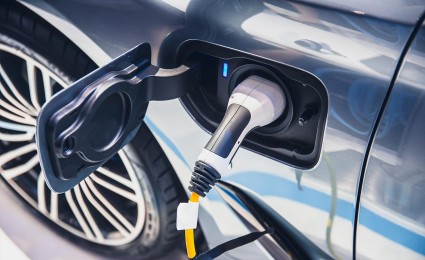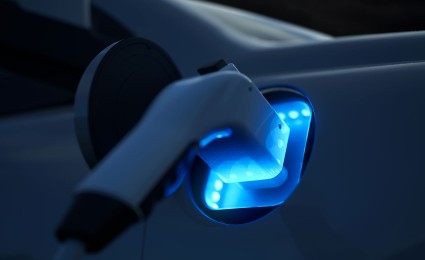

Battery Monitor 2024/2025: A turbulent year and outlook for value chain players
By Wolfgang Bernhart, Isaac Chan, Tim Hotz and Kyle Gordon
Challenges are mounting in the battery market – a look at the latest developments and implications
The shift to battery-powered vehicles is unstoppable. But the transition away from internal combustion engines is proving more turbulent than initially predicted. The current climate is particularly challenging, with EV sales behind expectations, leading to battery order volume reductions, and installed production over-capacities. This intensified competitive environment increases the cost pressure on both, EV manufacturers and battery producers. Regulators need to provide a stable regulatory framework, to increase planning security for investors in this highly uncertain economical and geopolitical environment. These are among the key findings of the Battery Monitor 2024/2025 report, prepared by Roland Berger in collaboration with the PEM Chair of RWTH Aachen University. This year's issue of the battery monitor provides an holistic overview on the market developments and highlights strategic options for decision makers across the battery value chain.

"Companies need to show that they can scale up production and produce high-quality battery cells to a low cost, to compete with imports from Asia."
Roland Berger’s annual Battery Monitor reports, prepared in collaboration with the Production Engineering of E-Mobility Components (PEM) chair at RWTH Aachen University, cast a light on both areas. They provide a comprehensive assessment of the state of the battery industry, illuminating the most pressing challenges and transformative changes, and detailing their implications. Each report mirrors the battery value chain, covering areas from demand forecasts and new innovations to the energy sector and recycling.
The latest battery monitor is especially important due to the recent industry challenges. Its six main chapters explore the following key points:
Overarching Market View: Growth in the EV market is slowing, so we provide insights into forecasting EV demand and outlines various scenarios. We also analyze how the competitive landscape is evolving and identify the technologies necessary for success in a market in which cost competitiveness is more crucial than ever.
Battery Materials: Cell chemistries are constantly being improved. Here we focus on recent changes, particularly in those chemistries designed for the EV segment, which are significantly reshaping the industry and OEMs' planning. For example, how can newly introduced cell chemistries like lithium manganese iron phosphate (LMFP) be leveraged?
Battery Production: With production ramp-up stalling, this chapter emphasizes the challenges associated with increasing production and assesses the persistent challenges to achieving production goals in Europe. It also looks at how sustainability can be addressed amid growing competition.
"Battery costs have been a central focus of the industry over the past year. While protectionism buys time for Western players, it also exacerbates the profitability challenges OEMs face with EVs."
Product Performance: The focus here is on the drivers of further EV adoption, and the factors holding them back. We look at whether barriers to adoption can be effectively addressed through advancements in battery cell and system design, and if so, how.
Battery Usage: The use of green energy and the transition away from fossil energy strongly impacts the sustainability of battery-usage. To assess progress, we provide insights into the energy sector's response to the increasing demand for EVs. We also evaluate whether the energy transition is on track to support a sustainable transportation paradigm and analyze the impact of grid mix on CO2 emissions of batteries. An update on the charging sector is included.
Circular Battery Economy: Renamed since previous editions to be more comprehensive, this chapter addresses topics related to battery recycling, reuse and refurbishment. It explores how the EU Battery Regulation influences the circular economy approach for batteries and identifies the challenges that persist for Re-X approaches, alongside major developments in this area.
Consistent with previous editions, each chapter is structured into sections covering sustainability , technology, competitiveness and innovation. The strategic implications of the main findings are provided for all major stakeholder groups (automotive OEMs, cell manufacturers, investors and regulators), as well as a near-term outlook. Combined, this ensures a holistic view of the industry's current state and future direction.
Key takeaways include:
- Slowing growth of EV sales and over-capacities for battery production have put significant cost pressure especially on European based players. This downturn has led to falling raw material prices, with battery cell prices decreasing as a result. But this trend is not seen as sustainable.
- Lithium iron phosphate (LFP) batteries are expected to dominate cost-sensitive applications due to their lower costs, but low-cost production within Western local value chains is hindered by supply chain challenges.
- On the anode side, increased usage of Silicon in form of mainly Silicon additives or Silicon carbon composites can be observed to increase energy density, fast charging capability, and potentially lower costs.
- Achieving the EU's CO2 targets necessitates a focus on renewable energy and robust local sourcing, with the goal of reducing emissions to 30-40 kg CO2 per kWh being attainable if pursued diligently.
For more details, download the Battery Monitor 2024/2025 report or contact one of our experts.
Register now to access the full publication “Battery Monitor 2024/2025. The value chain between economy and ecology”. Furthermore, you get regular news and updates directly in your inbox.



_image_caption_none.png)








_person_320.png)
